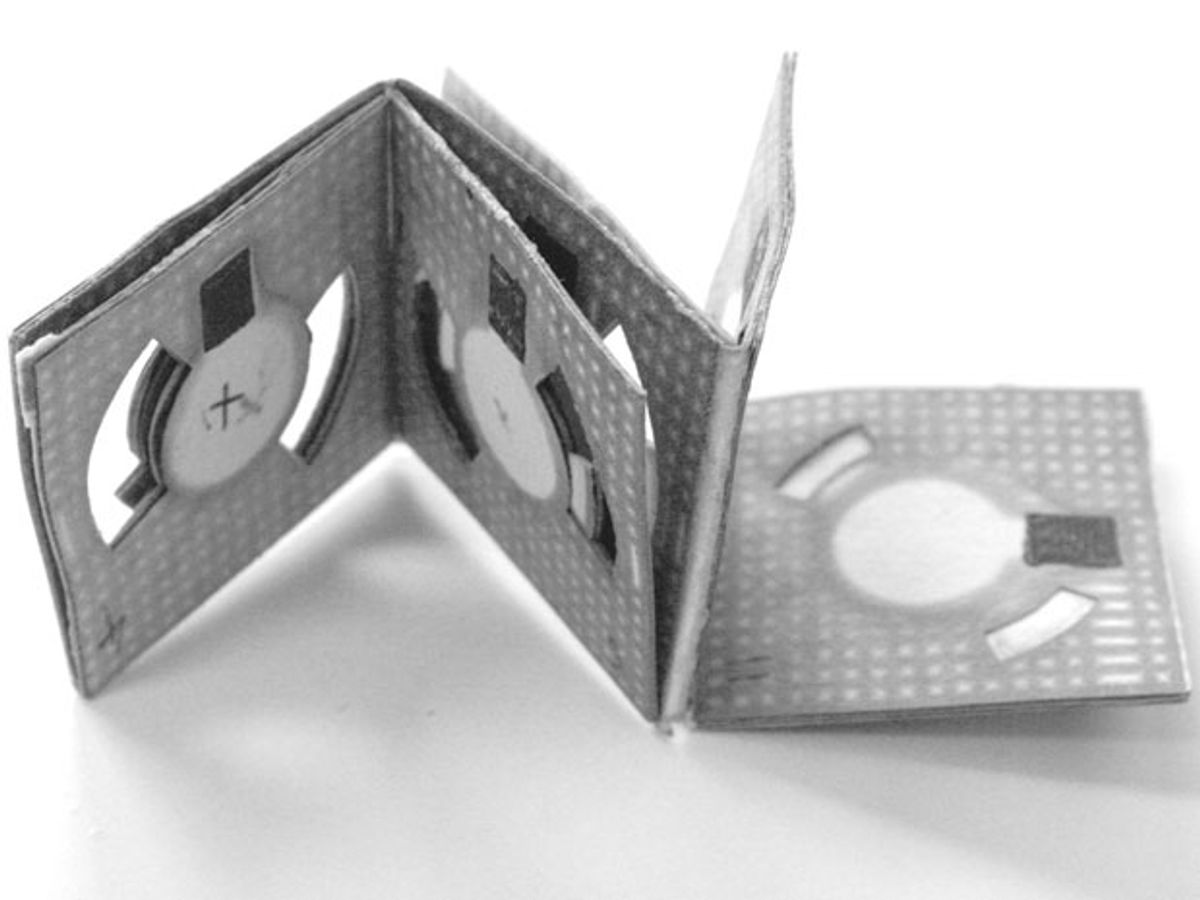The Japanese art of folding paper into objects, known as origami, has taken on new life in nanotechnology research. The latest incarnation of this ancient art comes to us via research out of Binghamton University in New York. The technique has been applied to a battery technology that uses bacteria as the power source.
In the journal Nano Energy, the Binghamton researchers demonstrate how they have captured the respiration of microbes to generate enough energy to power a paper-based biosensor. All the microbes that were needed could be provided in a single drop of liquid teeming with bacteria.
“Dirty water has a lot of organic matter,” said Seokheun “Sean” Choi, who led the research, in a press release. “Any type of organic material can be the source of bacteria for the bacterial metabolism.”
Origami’s role in the battery design comes into play with the folding of two-dimensional sheets to create a three-dimensional battery structure that is about the size of a matchbook. The air-breathing cathode was produced by spraying nickel onto one side of a typical piece of paper. The anode is screen printed with carbon paints. The bacteria-laced water was added into a folded battery stack. In operation, this stack is unfolded, exposing all the cathodes to the air, maximizing their cathodic reactions.
The point of developing this simple battery was to find a way to power a separate paper-based biosensor without depending on an external handheld device to run the analysis. Choi believes that the simple battery he and his colleagues have developed can produce the microwatts required to run a biosensor in a self-contained system.
This simple, self-contained device should prove particularly useful in remote locations where resources—especially money—are limited; the entire device would cost only five cents.
Having been awarded a US $300,000 three-year grant from the National Science Foundation to develop a commercially viable origami battery, Choi is confident that we could see such a device in the field in the not-too-distant future.
Choi added: “Paper is cheap and it’s biodegradable. And we don’t need external pumps or syringes [for a paper-based biosensor] because paper can suck up a solution using capillary force.”
Dexter Johnson is a contributing editor at IEEE Spectrum, with a focus on nanotechnology.



